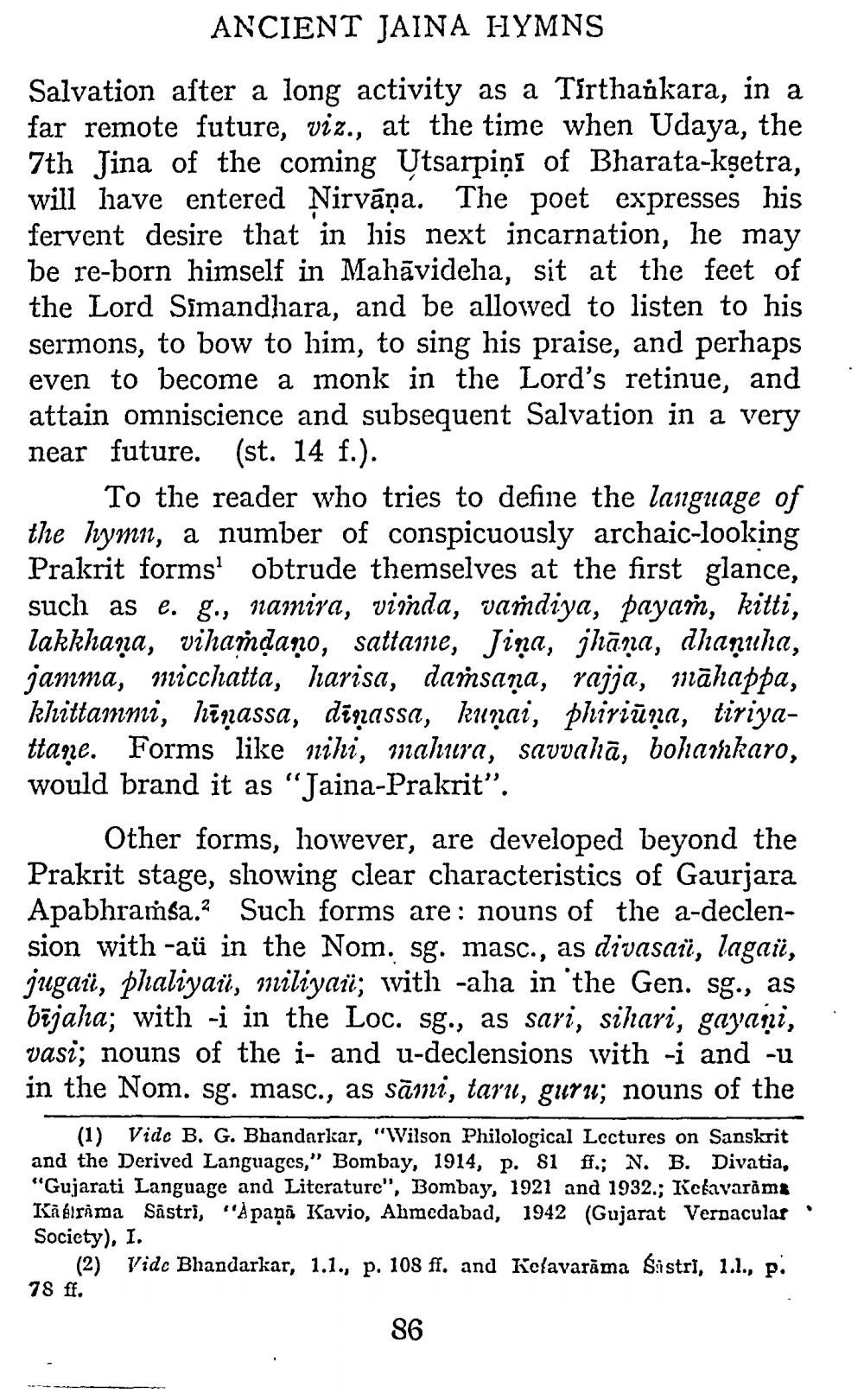________________
ANCIENT JAINA HYMNS
Salvation after a long activity as a Tirthankara, in a far remote future, viz., at the time when Udaya, the 7th Jina of the coming Utsarpini of Bharata-kṣetra, will have entered Nirvana. The poet expresses his fervent desire that in his next incarnation, he may be re-born himself in Mahavideha, sit at the feet of the Lord Simandhara, and be allowed to listen to his sermons, to bow to him, to sing his praise, and perhaps even to become a monk in the Lord's retinue, and attain omniscience and subsequent Salvation in a very near future. (st. 14 f.).
To the reader who tries to define the language of the hymn, a number of conspicuously archaic-looking Prakrit forms obtrude themselves at the first glance, such as e. g., namira, vimda, vaṁdiya, payaṁ, kitti, lakkhana, vihamdano, sattame, Jina, jhāna, dhanuha, jamma, micchatta, harisa, daṁsaņa, rajja, māhappa, khittammi, hīnassa, diņassa, kunai, phiriūna, tiriyattane. Forms like nihi, mahura, savvahā, bohamkaro, would brand it as "Jaina-Prakrit".
Other forms, however, are developed beyond the Prakrit stage, showing clear characteristics of Gaurjara Apabhramsa. Such forms are: nouns of the a-declension with -au in the Nom. sg. masc., as divasaï, lagaü, jugai, phaliyaü, miliyaü; with -aha in the Gen. sg., as bījaha; with -i in the Loc. sg., as sari, sihari, gayani, vasi; nouns of the i- and u-declensions with -i and -u in the Nom. sg. masc., as sāmi, taru, guru; nouns of the
(1) Vide B. G. Bhandarkar, "Wilson Philological Lectures on Sanskrit and the Derived Languages," Bombay, 1914, p. 81 ff.; N. B. Divatia, "Gujarati Language and Literature", Bombay, 1921 and 1932.; Kelavarāma Kā grāma Sastri, "Apaņā Kavio, Ahmedabad, 1942 (Gujarat Vernacular Society), I.
(2) Vide Bhandarkar, 1.1., p. 108 ff. and Kefavarama Sistri, 1.1., p.
78 ff.
86




